
Director Suresh Krissna: classic memories!!
Apr 04 2025
This interview texts are based on the video program with Director Suresh Krissna’s conversation with Chitra Laxmanan sir
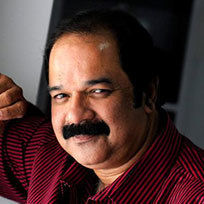
Suresh Krissna – The Visionary Behind the Icons
Suresh Krissna is a name that echoes across Indian cinema with reverence and admiration. A master storyteller and celebrated director, he has helmed nearly 40 films across multiple Indian languages, shaping the careers and elevating the personas of superstars like Rajinikanth, Kamal Haasan, Chiranjeevi, Venkatesh, Nagarjuna, Mohanlal, Vishnuvardhan, and Salman Khan.
He is best known for directing the cult classic Baasha, a film that redefined the narrative structure of the hero’s journey and became a landmark in Indian film history. With Baasha, Suresh Krissna didn’t just create a blockbuster—he crafted a mythos that generations continue to celebrate.
Equally at home on the small screen, he brought epic stories to life through television, most notably the ambitious Mahabharatham (2013) on Sun TV, which captivated millions with its scale and emotional depth.
From powerful family dramas to mass entertainers, Suresh Krissna’s filmmaking is marked by clarity of vision, emotional power, and cinematic grandeur. His journey remains a beacon of inspiration for aspiring filmmakers, proving that passion, discipline, and respect for the craft can transform storytelling into legacy.
Conversation with Director Suresh Krissna
Can you share how your journey into the film industry began?
My life started in Bombay, where I completed my schooling and college education. My college schedule was from 7 AM to 11 AM, and to pass time, I would watch films. Being a commerce student, I was offered an accountant job at LV Prasad’s office.
How did you manage both college and your job at Prasad Productions?
I used to attend college until 9 AM and then travel to Tardeo to work at Prasad Productions. My job was distributing salaries. On the first day, I distributed everyone’s salary, but I wanted someone to give me mine. So, I went to LV Prasad sir and requested him to hand me my salary. He gave me his blessings, asked my name, and when I replied “Suresh,” he immediately said, “Hereafter, you will receive ₹250 monthly.”
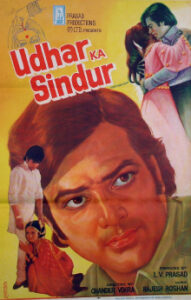
You had a chance to witness some rare decisions by LV Prasad. Can you share one such instance?
Yes, one of the most interesting cases was with the film Jay Vijay in Hindi. It was directed by LV Prasad sir himself, but unfortunately, it flopped. What was unheard of in those days was that he immediately pulled the film from theaters and went for a reshoot—something that directors rarely considered back then.
Despite all his efforts, when the reshot version was re-released after three months, it still didn’t work. However, the Telugu version was a success. This was a rare failure for Prasad Productions, which was known for delivering continuous hits at the time.
How did the failure of Jay Vijay impact LV Prasad and his team?
After the film flopped, many assistants left LV Prasad. But since I was an accountant, I had the opportunity to stay, converse with him, and even watch films critically with him. I started writing synopses, analyzing the plus and minus points of films. Around the same time, a person named Mr. Ram from Chennai used to watch Tamil films and send feedback via letters to LV Prasad sir. Seeing my growing interest in cinema, LV Prasad sir encouraged me, though at that time, I still had no idea I would land up in the film industry.
Can you recall any remarkable incidents with LV Prasad?
Yes, there are many. One unforgettable moment was when he directed Udhar Ka Sindoor starring Asha Parekh and Jeetendra. In one scene, Asha Parekh, who plays a blind woman, had to fall down a steep staircase with 50 steps. She was hesitant and unsure how to do it. During a break, someone in the unit commented on LV Prasad sir’s age, doubting if he could direct action scenes. After hearing this, he personally rolled down the staircase like a blind person, showing the exact movement he wanted. The entire unit applauded. Seeing this, Asha Parekh gained confidence and performed the scene perfectly.
How did you transition from being an accountant to working in film production?
One day, LV Prasad sir asked me if I could come to Madras, as he was producing a Hindi film directed by Dasari Narayana Rao. I moved there, stayed at my cousin’s house, and was given a Lambretta scooter by Prasad’s office. That was the beginning of my film journey. Later, I worked with K. Balachander on Ek Duuje Ke Liye, produced by LV Prasad.

You mentioned LV Prasad’s inspiring journey. Can you share it with us?
LV Prasad sir was from a remote village in Andhra Pradesh. Married at a young age, he was uninterested in farming and left home for Bombay at 17. He started as a tailor, survived on one piece of bread a week, then worked as a film studio watchman, a production boy, and slowly climbed the ladder. He appeared in India’s first talkie film in a minor role. Years passed, and he became a director with Sharada.
Three decades after leaving his village, he returned, surprising everyone who thought he had died. He reunited with his wife and took her back to Bombay. Just as his career took off, health issues arose. He turned to naturopathy, and after two months, something impossible happened—he recovered and built his empire.
LV Prasad is a legend in Indian cinema. How did he achieve such success late in life?
He started building his empire at the age of 48 and, in just 15 years, established Prasad Productions, achieving success in all languages. His sons, Anand and Ramesh, expanded into film processing, outdoor units, and even an eye hospital. His grandson, Sai Prasad, continues his legacy in the digital era.
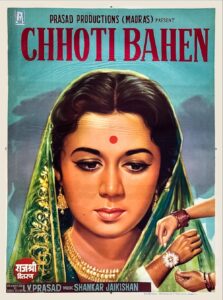
Any lighter moments of LV Prasad shooting that left a lasting impact on you?
One day, during the live sound era, we were shooting Chhoti Bahen with actor Rehman. He kept asking for retakes—18 times—complaining about external noise, crew movement, and even the focus puller. Finally, LV Prasad sir quietly told the focus puller, “Take the camera out.” Then he turned to Rehman and said, “Okay, start acting.” Rehman was stunned but understood the message and performed without complaints.
LV Prasad sir was a powerhouse of energy, even at 70. I have seen him sprint from the floor to the lift area with incredible speed. His dedication, discipline, and passion for cinema continue to inspire me to this day.
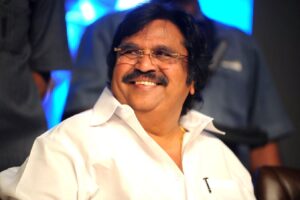
You had the opportunity to work with Dasari Narayana Rao. What was that experience like?
Dasari Narayana Rao was a legend. He holds a Guinness World Record for directing over 150 films. At one point, he directed 17 films in a single year—something unimaginable today. He was known for his extraordinary multitasking abilities and had a great variety in storytelling. Whether it was a small-budget film, a big-budget extravaganza, a family drama, or a political satire, he could handle all genres with ease.
He directed films with all the major stars of his era, including N.T. Rama Rao (NTR), Akkineni Nageswara Rao, and later Chiranjeevi. He won multiple National Awards, State Awards, and Filmfare Awards. His ability to shift between different narrative styles was remarkable. Watching him work was like attending a masterclass in filmmaking.
What was your first interaction with K. Balachander like?
At that time, LV Prasad had acquired the Hindi remake rights of K. Balachander’s Telugu film Maro Charithra, a love tragedy that ran for a year in Madras. I was assigned to receive KB sir when he arrived in Bombay for the remake.
I had heard a lot about him but hadn’t seen many of his films, so my approach was quite casual. I made sure he got everything he needed, especially South Indian dishes in Bombay, which he loved. As our conversations deepened, we spoke a lot about cinema.
One of the highlights was meeting music directors Laxmikant-Pyarelal together. KB sir showcased the original Telugu version of Maro Charithra to them. Later, Laxmikant-Pyarelal went on to compose the music for Ek Duuje Ke Liye.

You were already a fan of legendary music composers like Laxmikant-Pyarelal, Shankar Jaikishan, and R.D. Burman. How did the music for Ek Duuje Ke Liye take shape?
Yes, I was a great admirer of these composers, and Ek Duuje Ke Liye was a magical experience. I witnessed how KB sir and Laxmikant-Pyarelal shaped the film’s music and its lyrical depth.
Initially, I was set on the Telugu version’s tune because it had a fantastic melody. But when Laxmikant-Pyarelal composed a completely new tune for the Hindi version, I was skeptical. However, KB sir, with his sharp musical instincts, immediately recognized its brilliance. He said, “This is a great song.” That song was Tere Mere Beech Mein, which went on to become a timeless hit.
Trivia of song recording moments?
Ah, that was a magical moment! KB sir wanted S.P. Balasubrahmanyam (SPB) to sing for Kamal Haasan. But Laxmikant-Pyarelal and Anand Bakshi were hesitant due to SPB’s South Indian accent. KB sir stood firm—he explained that the film was about a South Indian boy who doesn’t speak Hindi well in the beginning but gradually becomes fluent. The accent wasn’t a flaw—it was part of the character’s journey. KB sir convinced them, and SPB was on board.
During the recording, SPB accidentally spilled coffee on Lata Mangeshkar ji’s saree. She just smiled and said, “It’s a good omen, let’s start.” Throughout the session, she guided SPB with the Hindi lyrics. Their camaraderie and mutual respect were something to witness. That song became iconic.
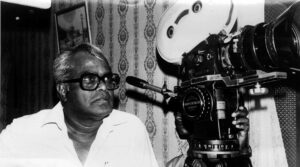
How did your journey with Ek Duuje Ke Liye and K. Balachander begin?
It was truly a twist of destiny. Everyone had left Bombay for Vizag—KB sir, producer L.V. Prasad, the crew. On the first day of the shoot, the dialogue assistant didn’t show up. Since I was fluent in both Tamil and Hindi, they called me to join immediately. I traveled from Bombay to Madras and then to Vizag with some actors by Coromandel Express.
Initially, I was to help as a dialogue coach—something I had never done before. I was meeting Kamal Haasan for the first time. Just as I was about to begin, the original dialogue coach arrived, and I felt relieved. But that was just the beginning.
What was it like working with Kamal Haasan during that time?
Kamal sir was incredibly sharp and curious. He noticed I was from Bombay but spoke Tamil fluently. He would tease me, saying the Telugu songs were better than the Hindi ones. I would argue back that the Hindi version had more impact. These exchanges became the beginning of a warm, collaborative bond. Eventually, I was invited to join the direction team of KB sir—and that changed everything for me.
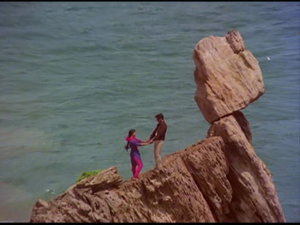
KB sir was known for his intense direction style. Any moments on set that still stay with you?
So many! One unforgettable moment was when KB sir visualized a long trolley shot between two massive rocks in Vizag. There was no existing setup. But when he commanded it, the entire unit sprang into action—from the manager to the assistants. We used small rocks, stools, anything we could find to build a support to lay trolley track. The result? A breathtaking visual. Even today, when I watch that song, it gives me goosebumps.
“Ananthu, Ammerjaan, and the entire director’s team were deeply committed and charged with devotion to bringing the director’s vision to life. Especially notable were Cinematographer B.S. Loknath and his team, including Raghunatha Reddy, whose visual storytelling played a pivotal role.”
Another moment—I was the only one who knew Hindi well on set, so I was assigned to paint “Vasu loves Sapna” on a huge hanging rock. It was dangerously steep. Kamal Haasan sir came with me, helped me climb, and even held my waistband while I painted. That scene became a metaphor for eternal love—and it’s now cinematic history.
It seems you were more than just an assistant—you became part of the film’s soul.
Oh yes—one unforgettable experience was the “Vasu Sapna” wall scene. There was a sequence where the heroine’s room had to be filled with “Vasu Sapna” written repeatedly on every inch of the wall—an act of rebellion and passionate love, reflecting her defiance against her mother.
KB sir envisioned it as a powerful visual metaphor. And the task of executing it? It fell on me. I spent the entire day, from morning till night, meticulously writing “Vasu Sapna” in Hindi on all four walls without leaving a single gap. My hands were aching, but I knew this wasn’t just a job—it was storytelling in action.
When the scene appeared on screen, it lasted only a few minutes. But it became one of the most iconic visuals in Indian cinema, demonstrating KB sir’s genius: how something so painstaking and subtle could emotionally thunder through the screen.
Is there a memorable moment that kept you in a surprise state?
Yes, that’s the beauty of working under KB sir. Everyone was involved in everything. One day, we were shooting in a rich house. After a few wide shots, the owner asked us to vacate immediately. We were worried. But KB sir just said, “Give me a few minutes.” He finished the end scene.
Then he shifted to the lodge to shoot in between shots …where is the rich house ? Director planning to match it..lodge we are staying…to our surprise using close-ups, light play, and props like lampshades and idols,focus shifts he seamlessly brought the narrative together .. When edited, no one could tell the difference. That was his genius—cinema was fluid, adaptable, and always beautiful in his hands.
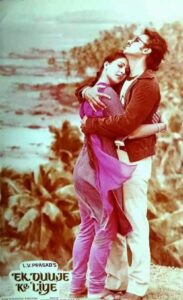
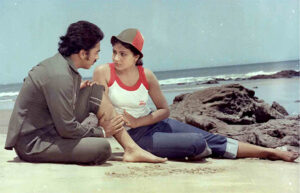
How did the premiere of Ek Duuje Ke Liye in Bombay unfold?
It was a golden evening. Icons like Raj Kapoor, Yash Chopra, and Manmohan Desai were in attendance. The film began—songs, dialogues, Kamal’s introduction… everything was met with thunderous applause. At the interval, Manmohan Desai stood on his seat and shouted, “What a film is this!” The hall erupted. Raj Kapoor, the showman himself, was deeply moved.
After the film ended, everyone was shaken by the tragic climax. At the party in Oberoi Hotel, Raj Kapoor kept asking, “Why such a tragedy?” I didn’t know how to respond. I called KB sir that night and shared Raj Kapoor’s reaction and my concerns. KB sir simply said, “If the film has impacted Raj Kapoor so deeply, it will touch every heart.”
He was right. The film became a phenomenon. People watched it again and again. The tragedy haunted them. It became a classic.
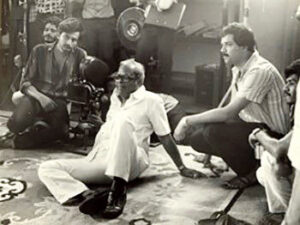
How did this experience shape your future in cinema?
L.V. Prasad sir wanted me to work with him. KB sir also wished I continued. At one moment, LV Prasad sir told me, “You should work with KB. He is a genius.” That blessing sealed it. I shifted to Madras and worked with KB sir for the next 7 years—on 14 films, across multiple languages. That was my university, my temple. Later, I ventured out and became a director myself. But the roots of my love for cinema were planted during Ek Duuje Ke Liye—by watching the master at work.
Drafted by
CJ Rajkumar
Author/ Cinematographer
Based on the youtube interview Tilted ,” Mile stone” conceived by Writer,Director,Actor, Producer and Anchor Chitra Laxman sir.
